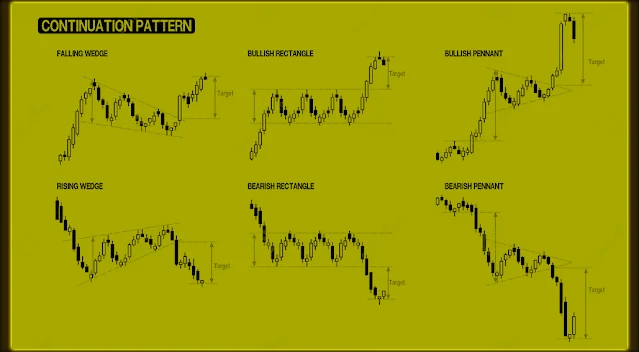Free Domain Privacy for Life: Unlocking the Benefits with Namecheap Coupons
In today's digital age, having an online presence is crucial for businesses, bloggers, and individuals alike. One of the first steps towards establishing your online identity is purchasing a domain name. Namecheap, a well-known domain registrar, has been a popular choice for people looking to secure their online real estate affordably. However, Namecheap doesn't stop at just domain registration; they also offer a valuable service that ensures your online privacy – Domain Privacy Protection. In this article, we'll explore the importance of domain privacy, the benefits of using Namecheap, and how you can enjoy free domain privacy for life when you buy a domain from Namecheap using coupons.
Why is Domain Privacy Protection Essential?
When you purchase a domain, your personal information becomes publicly accessible in the WHOIS database, a directory containing contact details of domain owners. This information typically includes your name, physical address, email address, and phone number. Without domain privacy protection, anyone can access this data, exposing you to various risks, such as:
Spam and Unsolicited Communications: With your email address and phone number exposed, you become an easy target for spam emails and unwanted calls from marketers and scammers.
- Identity Theft: Cybercriminals can use your personal information to impersonate you or engage in identity theft, potentially causing financial and reputational damage.
- Unwanted Solicitations: Your contact information may be sold to third parties, leading to unwanted solicitations and marketing offers.
- Privacy Invasion: Individuals seeking to invade your privacy may use your address and phone number for unwelcome visits or harassment.
- Phishing and Scams: Scammers can craft convincing phishing attempts using your information, making it easier to trick you or others associated with your domain.
Namecheap: A Trusted Domain Registrar
Namecheap has earned a reputation as a trusted and customer-centric domain registrar. Founded in 2000, it has since served millions of customers worldwide, offering a wide range of domain-related services, including web hosting, SSL certificates, and domain privacy protection.
Key Features of Namecheap:
- Affordability: Namecheap is known for its competitive pricing, making it an excellent choice for individuals and small businesses on a budget.
- User-Friendly Interface: Their website and domain management dashboard are intuitive and easy to navigate, even for beginners.
- 24/7 Customer Support: Namecheap provides round-the-clock customer support, ensuring you receive assistance whenever you need it.
- Free Domain Privacy for the First Year: When you register a domain with Namecheap, you receive free domain privacy protection for the first year, shielding your personal information from public view.
- Regular Promotions and Coupons: Namecheap frequently offers discounts and coupons, making their services even more cost-effective.
How to Get Free Domain Privacy for Life with Namecheap Coupons
Now, let's delve into the exciting aspect of getting free domain privacy for life when you purchase a domain from Namecheap using coupons.
- Choose Your Domain: Begin by selecting the domain name you want. Namecheap offers a vast selection of domain extensions, so you can find the perfect one for your website or project.
- Search for Coupons: Before completing your purchase, take a few moments to search for Namecheap coupons. These coupons can provide discounts, free services, or special offers.
- Apply the Coupon: When you've found a suitable coupon, apply it during the checkout process. The discount or free service will be automatically reflected in your order total.
- Complete Your Purchase: After applying the coupon, review your order and complete the payment process. Namecheap accepts various payment methods, including credit cards, PayPal, and cryptocurrency.
- Enjoy Free Domain Privacy for Life: Thanks to the coupon, you'll not only get the domain at a discounted price but also secure free domain privacy protection for the entire duration of your domain registration.
Benefits of Free Domain Privacy for Life
Securing free domain privacy for life with Namecheap offers numerous advantages:
- Protect Your Privacy: Your personal information remains confidential, shielding you from spam, scams, and identity theft.
- Maintain Professionalism: If you're running a business or personal brand, domain privacy protection helps you maintain a professional image by keeping your contact details private.
- Reduce Unwanted Communications: With your contact information hidden, you'll experience fewer unwanted solicitations, allowing you to focus on your online activities without distractions.
- Enhance Security: Protecting your data from public access also enhances the security of your online presence, reducing the risk of cyberattacks.
- Peace of Mind: Knowing that your personal information is safeguarded allows you to concentrate on your website or online venture without worrying about potential privacy breaches.
Final thoughts
In a digital landscape where online privacy is paramount, Namecheap stands out as a domain registrar committed to protecting your personal information. By taking advantage of Namecheap coupons, you can not only secure your domain at an affordable price but also enjoy free domain privacy for life. This combination of affordability and security makes Namecheap an excellent choice for individuals and businesses looking to establish a strong online presence while safeguarding their personal information.
Remember that while domain privacy protection for the first year is included with your Namecheap domain registration, you can continue to enjoy this crucial service for free by using Namecheap coupons to renew your domain each year. With Namecheap, you can focus on what truly matters – building and maintaining your online presence – without the worry of privacy intrusions. So, go ahead, explore Namecheap's domain offerings, and unlock the benefits of free domain privacy for life today. Your online identity deserves the protection Namecheap provides.
.png)

















